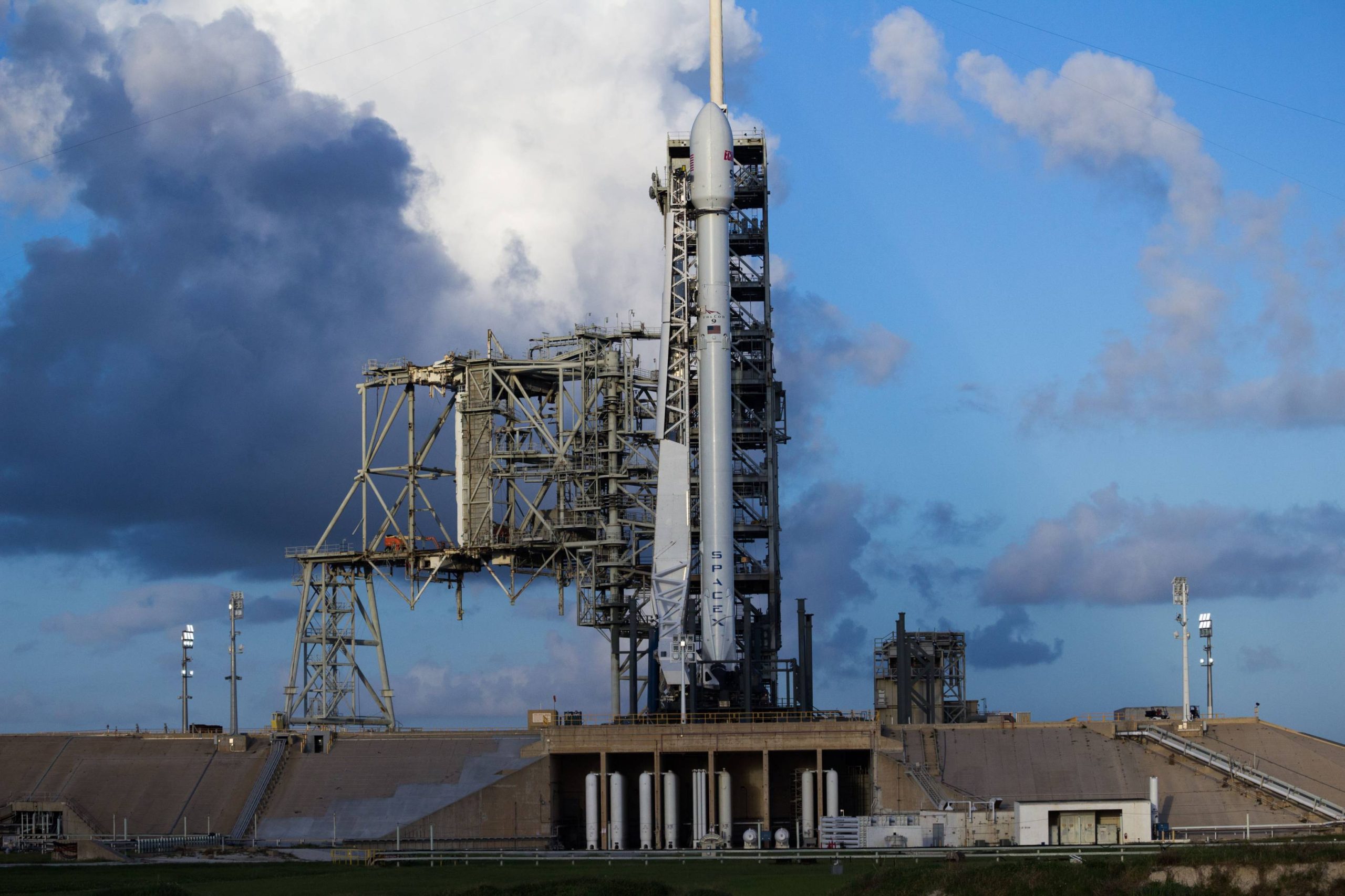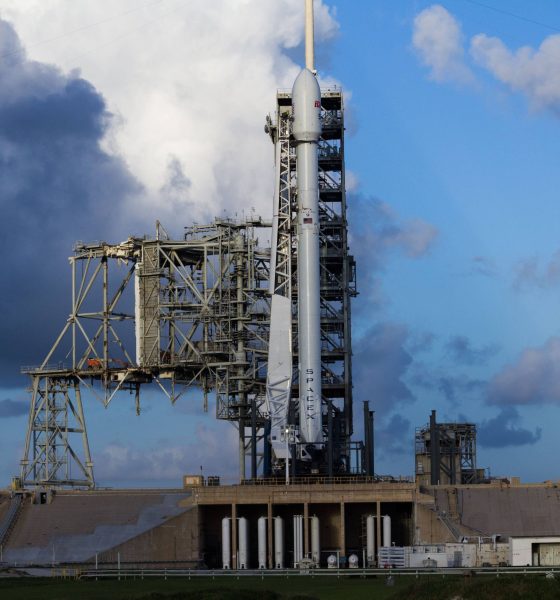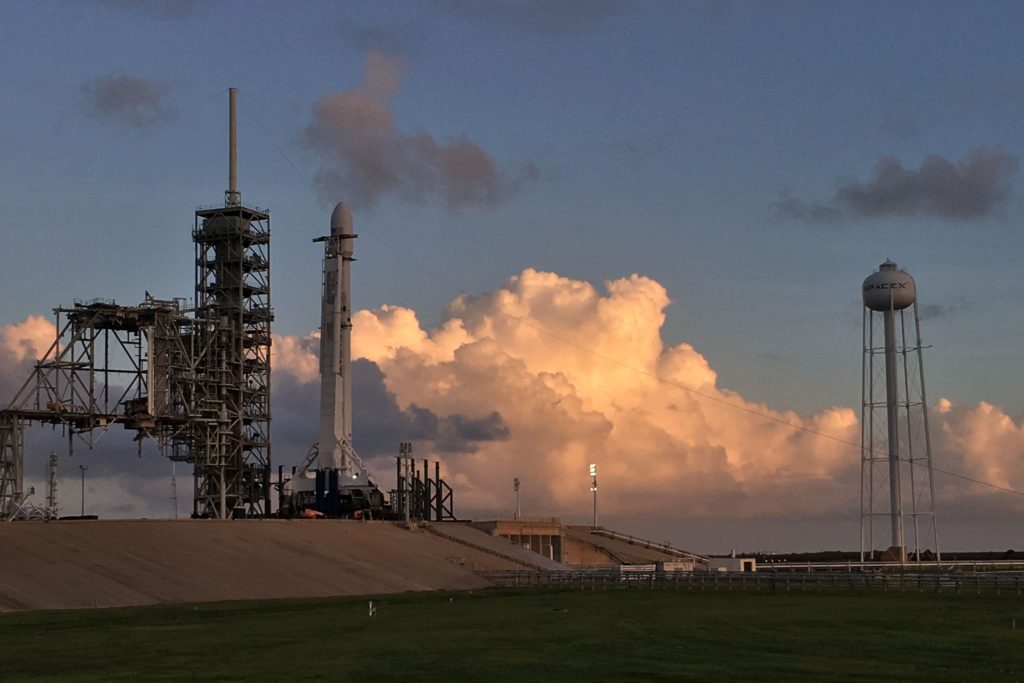

News
SpaceX to launch a mystery ‘ZUMA’ payload in November
According to FCC documentation and information from industry insiders, SpaceX is planning to conduct its 17th launch of 2017 on November 10th. Scheduled to lift off from SpaceX’s Florida-based LC-39A launch pad 12 days after the current date for Koreasat 5A, the now-routine ~14 day mission cadence is not the topic of interest this time around.
Rather, the mystery surrounding this newly-revealed launch exists because not a soul in the spaceflight fan community appears to know what the payload is – (code)named ZUMA – or who ZUMA is being launched for. This secrecy would would be far from unusual if the mission was being flown for the National Reconnaissance Office or another military agency, but there is no evidence to suggest that Falcon 9 will be carrying a government payload.
Further, the limited information currently available is somewhat contradictory, making this launch and payload even more intriguing. A veil of secrecy as thick as this surrounding a commercial satellite or satellites is extraordinarily unusual. There simply is no immediately obvious explanation for why a commercial entity would require this level anonymity for a satellite launch.


The Redditor’s username has been redacted for the sake of privacy.
What we know
Based on two recently unearthed FCC launch and landing permits, SpaceX Mission 1390 will launch from LC-39A no earlier than November 10th, followed by first stage recovery at the nearby Landing Zone-1 (LZ-1) at Cape Canaveral Air Force Station.
Courtesy of a Reddit user with friends inside SpaceX and a member of the NASASpaceflight forums, we also know that payload is codenamed ZUMA (or Zuma) and its launch is exceptionally time-sensitive for unknown reasons. The Reddit user also provided info that would completely negate any possibility that the payload is being launched for a government entity, as government agencies would not be concerned about revenue generation. A launch date of November 15th was also provided, reportedly pushed back a few days by a “slight slip in testing”.

SES-11’s refurbished Falcon 9 seen on the morning of October 11th. ZUMA will launch from the same pad. (Tom Cross/Teslarati)
Based on the above information, several preliminary conclusions can be drawn. First stage recovery on land indicates that the payload will be heading to an orbit well below the geostationary (transfer) orbits sought by established communications satellite operators. The launch could be for one of several prospective Low Earth Orbit (LEO) constellation companies, with OneWeb, Telesat, and Boeing the obvious first choices. However, it seems unrealistic to argue that a handful of experimental LEO communications satellites could possibly provide a company “lots of potential future revenue” or that those initial experimental satellites would be “extremely critical”. While the intense competition among the prospective LEO operators would rationalize some degree of ZUMA’s secrecy, it defies belief that potential LEO constellation competitors would willingly pay SpaceX for launches when that revenue might directly fund SpaceX’s own competing constellation, Starlink. Another obvious option would be SpaceX’s own experimental communications satellites, but such a move would not be in the best interests of a launch provider while launches for their own paying customers’ are slipping into 2018 due to a lack of launch capacity.
All things considered, the information posted on Reddit is far from official and should not be treated as conclusive. Still, reliable sources from NASASpaceflight.com have corroborated at least the name, ZUMA, and added that the Falcon 9 it will launch aboard is expected to be new. Assuming SpaceX itself is willing or able to reveal their identity, it looks like we will simply have to wait to find out who the mysterious customer is and what exactly warranted this unusual level of secrecy.

News
Tesla FSD fleet is nearing 7 billion total miles, including 2.5 billion city miles
As can be seen on Tesla’s official FSD webpage, vehicles equipped with the system have now navigated over 6.99 billion miles.

Tesla’s Full Self-Driving (Supervised) fleet is closing in on almost 7 billion total miles driven, as per data posted by the company on its official FSD webpage.
These figures hint at the massive scale of data fueling Tesla’s rapid FSD improvements, which have been quite notable as of late.
FSD mileage milestones
As can be seen on Tesla’s official FSD webpage, vehicles equipped with the system have now navigated over 6.99 billion miles. Tesla owner and avid FSD tester Whole Mars Catalog also shared a screenshot indicating that from the nearly 7 billion miles traveled by the FSD fleet, more than 2.5 billion miles were driven inside cities.
City miles are particularly valuable for complex urban scenarios like unprotected turns, pedestrian interactions, and traffic lights. This is also the difference-maker for FSD, as only complex solutions, such as Waymo’s self-driving taxis, operate similarly on inner-city streets. And even then, incidents such as the San Francisco blackouts have proven challenging for sensor-rich vehicles like Waymos.
Tesla’s data edge
Tesla has a number of advantages in the autonomous vehicle sector, one of which is the size of its fleet and the number of vehicles training FSD on real-world roads. Tesla’s nearly 7 billion FSD miles then allow the company to roll out updates that make its vehicles behave like they are being driven by experienced drivers, even if they are operating on their own.
So notable are Tesla’s improvements to FSD that NVIDIA Director of Robotics Jim Fan, after experiencing FSD v14, noted that the system is the first AI that passes what he described as a “Physical Turing Test.”
“Despite knowing exactly how robot learning works, I still find it magical watching the steering wheel turn by itself. First it feels surreal, next it becomes routine. Then, like the smartphone, taking it away actively hurts. This is how humanity gets rewired and glued to god-like technologies,” Fan wrote in a post on X.
News
Tesla starts showing how FSD will change lives in Europe
Local officials tested the system on narrow country roads and were impressed by FSD’s smooth, human-like driving, with some calling the service a game-changer for everyday life in areas that are far from urban centers.

Tesla has launched Europe’s first public shuttle service using Full Self-Driving (Supervised) in the rural Eifelkreis Bitburg-Prüm region of Germany, demonstrating how the technology can restore independence and mobility for people who struggle with limited transport options.
Local officials tested the system on narrow country roads and were impressed by FSD’s smooth, human-like driving, with some calling the service a game-changer for everyday life in areas that are far from urban centers.
Officials see real impact on rural residents
Arzfeld Mayor Johannes Kuhl and District Administrator Andreas Kruppert personally tested the Tesla shuttle service. This allowed them to see just how well FSD navigated winding lanes and rural roads confidently. Kruppert said, “Autonomous driving sounds like science fiction to many, but we simply see here that it works totally well in rural regions too.” Kuhl, for his part, also noted that FSD “feels like a very experienced driver.”
The pilot complements the area’s “Citizen Bus” program, which provides on-demand rides for elderly residents who can no longer drive themselves. Tesla Europe shared a video of a demonstration of the service, highlighting how FSD gives people their freedom back, even in places where public transport is not as prevalent.
What the Ministry for Economic Affairs and Transport says
Rhineland-Palatinate’s Minister Daniela Schmitt supported the project, praising the collaboration that made this “first of its kind in Europe” possible. As per the ministry, the rural rollout for the service shows FSD’s potential beyond major cities, and it delivers tangible benefits like grocery runs, doctor visits, and social connections for isolated residents.
“Reliable and flexible mobility is especially vital in rural areas. With the launch of a shuttle service using self-driving vehicles (FSD supervised) by Tesla in the Eifelkreis Bitburg-Prüm, an innovative pilot project is now getting underway that complements local community bus services. It is the first project of its kind in Europe.
“The result is a real gain for rural mobility: greater accessibility, more flexibility and tangible benefits for everyday life. A strong signal for innovation, cooperation and future-oriented mobility beyond urban centers,” the ministry wrote in a LinkedIn post.
News
Tesla China quietly posts Robotaxi-related job listing
Tesla China is currently seeking a Low Voltage Electrical Engineer to work on circuit board design for the company’s autonomous vehicles.

Tesla has posted a new job listing in Shanghai explicitly tied to its Robotaxi program, fueling speculation that the company is preparing to launch its dedicated autonomous ride-hailing service in China.
As noted in the listing, Tesla China is currently seeking a Low Voltage Electrical Engineer to work on circuit board design for the company’s autonomous vehicles.
Robotaxi-specific role
The listing, which was shared on social media platform X by industry watcher @tslaming, suggested that Tesla China is looking to fill the role urgently. The job listing itself specifically mentions that the person hired for the role will be working on the Low Voltage Hardware team, which would design the circuit boards that would serve as the nervous system of the Robotaxi.
Key tasks for the role, as indicated in the job listing, include collaboration with PCB layout, firmware, mechanical, program management, and validation teams, among other responsibilities. The role is based in Shanghai.
China Robotaxi launch
China represents a massive potential market for robotaxis, with its dense urban centers and supportive policies in select cities. Tesla has limited permission to roll out FSD in the country, though despite this, its vehicles have been hailed as among the best in the market when it comes to autonomous features. So far, at least, it appears that China supports Tesla’s FSD and Robotaxi rollout.
This was hinted at in November, when Tesla brought the Cybercab to the 8th China International Import Expo (CIIE) in Shanghai, marking the first time that the autonomous two-seater was brought to the Asia-Pacific region. The vehicle, despite not having a release date in China, received a significant amount of interest among the event’s attendees.








